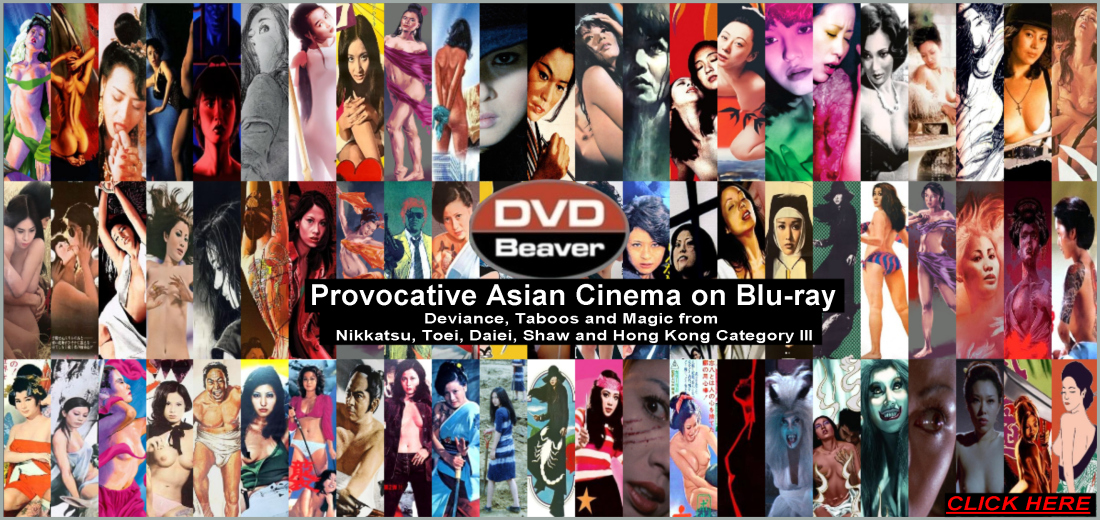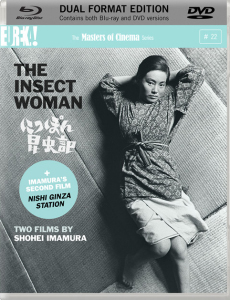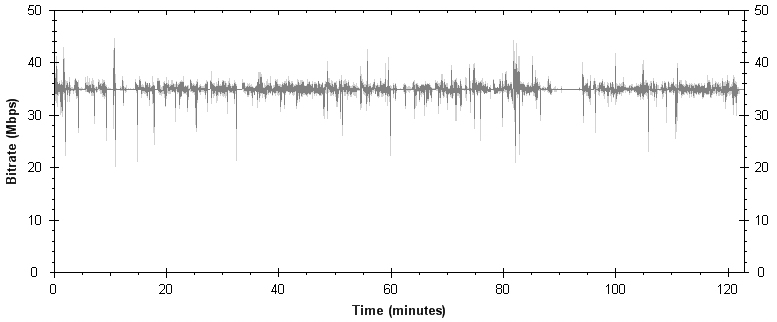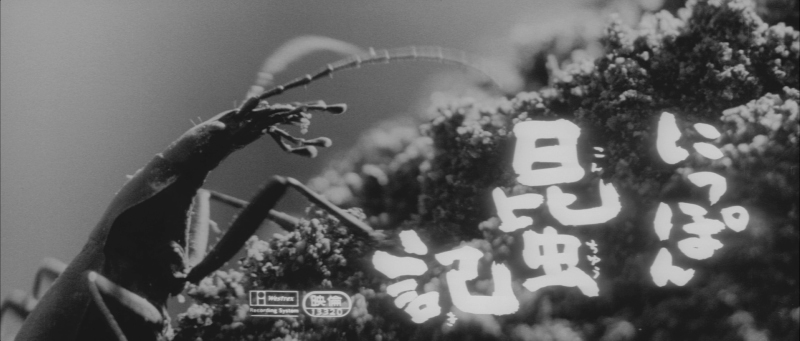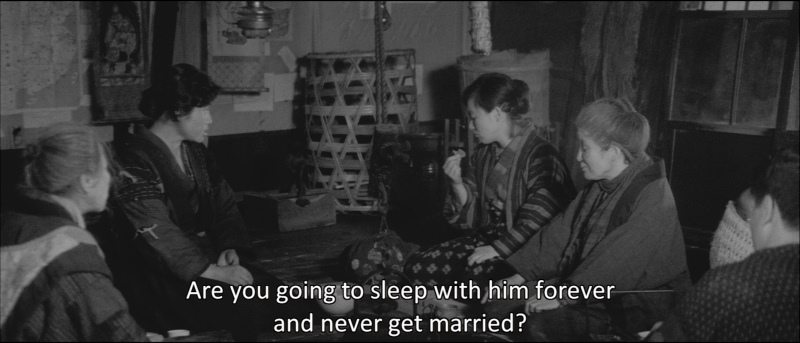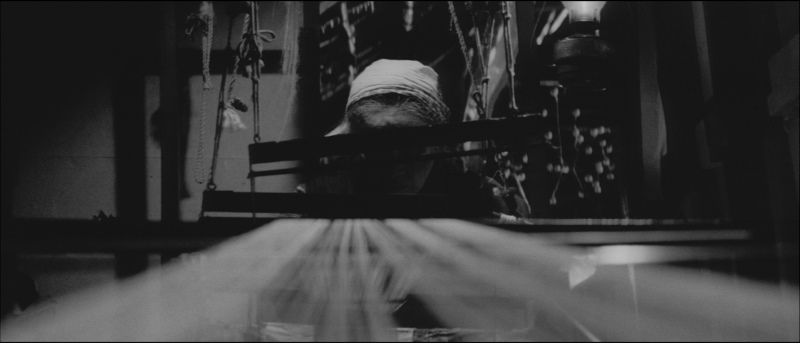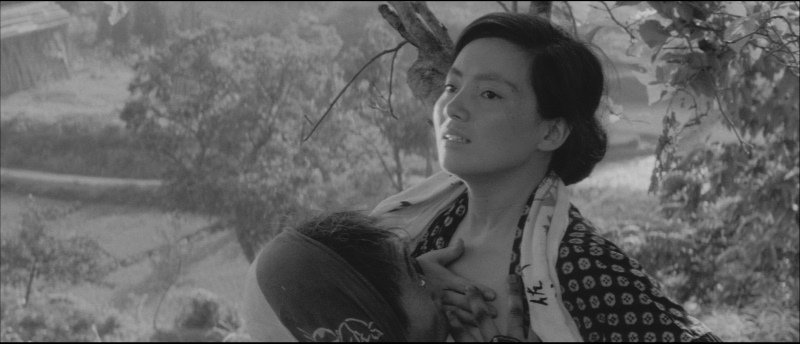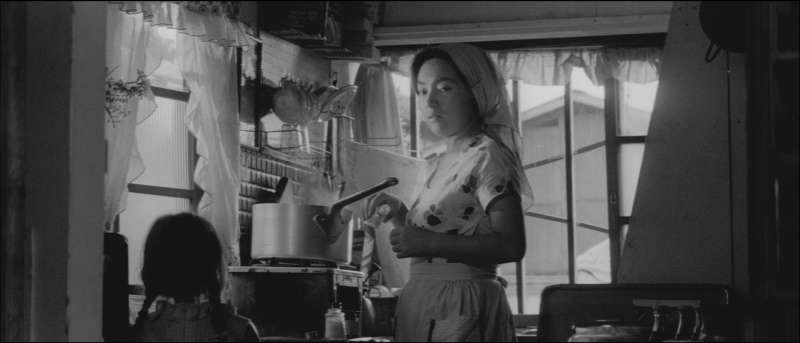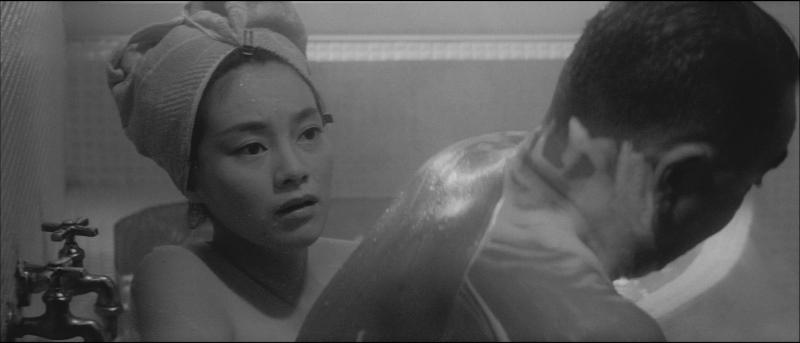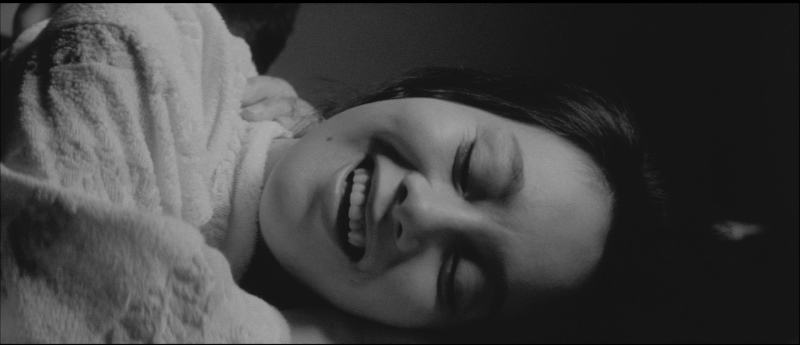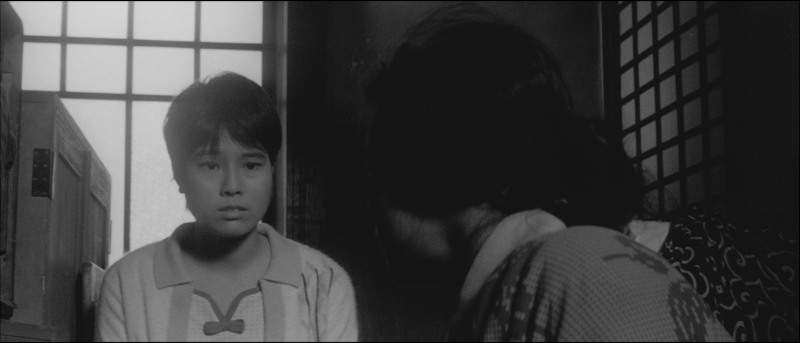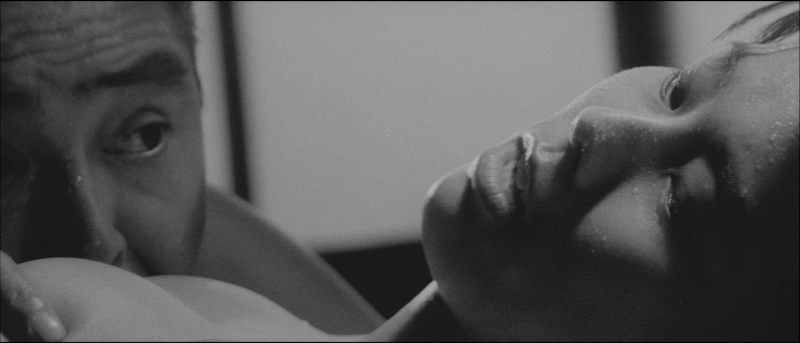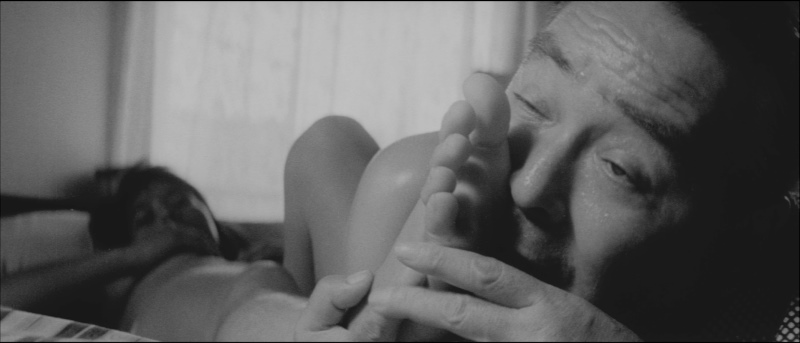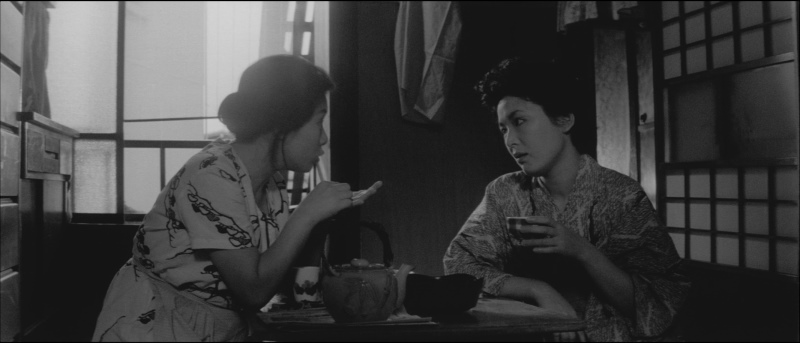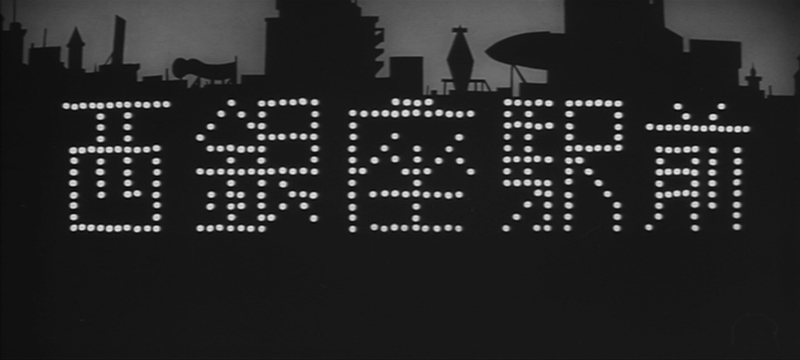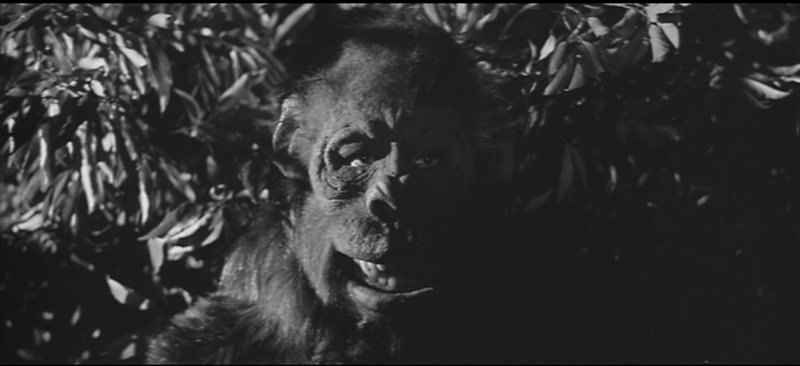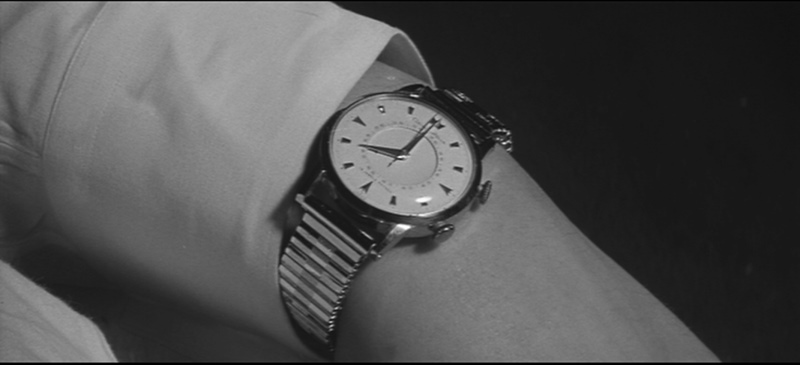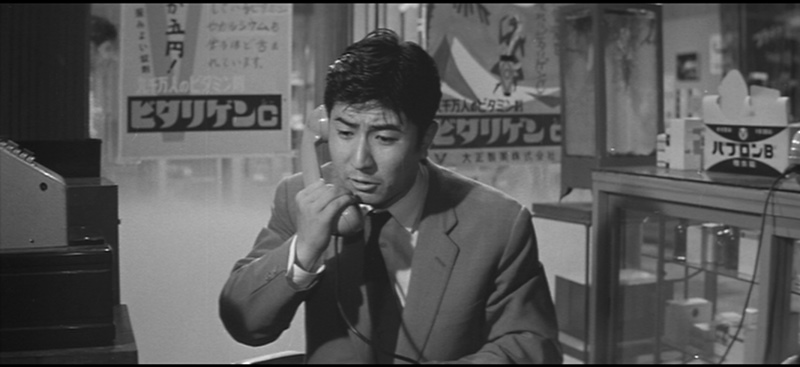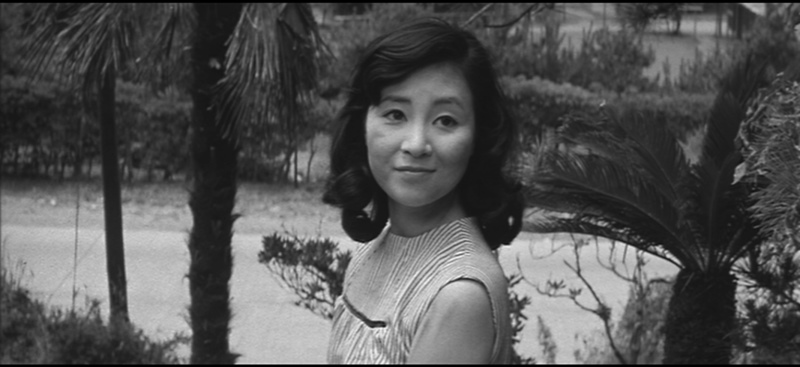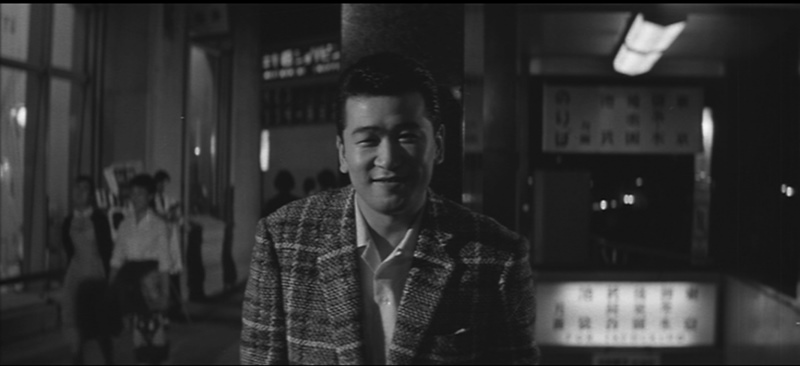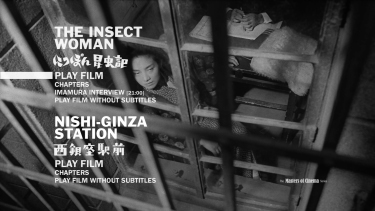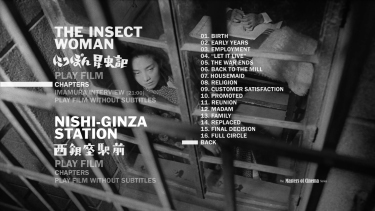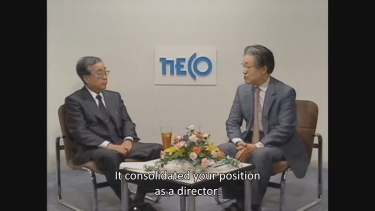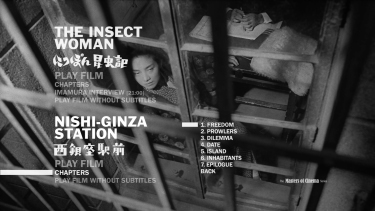![]()
![]()

![]()
![]()
|
Search DVDBeaver |
S E A R C H D V D B e a v e r |
|
|
The Insect Woman aka Nippon konchûki [Blu-ray]
(Shôhei Imamura, 1963)
Review by Gary Tooze
Production: Theatrical: Nikkatsu Video: Masters of Cinema Spine #22
Disc: Region: B-locked (as verified by the Momitsu region FREE Blu-ray player) Runtime: 2:02:51.822 Disc Size: 47,430,128,273 bytes Feature Size: 35,105,955,840 bytes Nishi-Ginza Station Size: 8,925,911,040 bytes Video Bitrate: 34.99 Mbps Chapters: 16 Case: Transparent Dual-Format Blu-ray case Release date: February 21st, 2011
Video: Aspect ratio: 2.35:1 Resolution: 1080p / 23.976 fps Video codec: MPEG-4 AVC Video
Audio: DTS-HD Master Audio Japanese 1281 kbps 2.0 / 48 kHz / 1281 kbps / 24-bit (DTS Core: 2.0 / 48 kHz / 512 kbps / 24-bit)
Subtitles: English, none
Extras:
• Newly restored
high-definition master of The Insect Woman Enclosed DVD of the Feature
Bitrate:
Description: “My heroines are true to life – just look around you at Japanese women. They are strong, and they outlive men,” director Shôhei Imamura once observed. And so an audacious, anthropological approach to filmmaking came into full maturity with the director’s vast 1963 chronicle of pre- and post-war Japan, The Insect Woman [Nippon-konchûki, or An Account of Japanese Insects].
The Film: Born in a rural farming village in 1918, Tomé survives decades of Japanese social upheaval, as well as abuse and servitude at the hands of various men. Yet Shohei Imamura, ever the cinematic “entomologist,” refuses to make a victim of her, instead observing Tomé (played by the extraordinary Sachiko Hidari) as a fascinating, pragmatic creature of twentieth-century Japan. A portrait of opportunism and resilience in three generations of women, The Insect Woman is Imamura’s most expansive film, and Tomé his ultimate heroine. Shohei Imamura's darkly elegant 1963 film about a rural Japanese woman drawn into a life of prostitution compares the lead character to an insect for her persistence in the face of adversity—it even begins with an insect climbing a hill. At the same time Imamura presents the social forces that shape his characters' actions: the woman's difficult family life (including an incestuous relationship with a stepfather) and the economic hardships following World War II pull her into the streets but also help elevate her to become a powerful madam. The insect metaphor extends into the film's rhythms: the movements of the woman—and of groups of characters seen in tableaux as they eat or talk—often seem as jittery and reflex-driven as a bug's. But the film is stylistically muddled, many scenes ending in freeze-frames that sometimes comment on the narrative by leaving characters in midstream but other times seem affected. Excerpt from Fred Camper's review at The Chicago Reader located HEREImage : NOTE: The below Blu-ray captures were taken directly from the Blu-ray disc. The Insect Woman was offered on DVD in 2009 from Criterion in their Pigs, Pimps, & Prostitutes: 3 Films by Shohei Imamura boxset (reviewed HERE). we have compared one frame at the very bottom of this review. The Masters of Cinema is brighter, shows more detail and looks more like film. The Blu-ray looks rich with one brief instance of more noticeable damage but otherwise is similar to other Japanese film-to-1080P we have seen from the 60's. The transfer supports the texture and I see no signs of manipulation. There is no distracting noise. There are sequences of still images in The Insect Woman that generally look the same visual level as the live-action. The transfer of Nishi-Ginza Station is of similar quality - progressive, relatively clean - perhaps a shade darker. It's bitrate is smaller.
CLICK EACH BLU-RAY CAPTURE TO SEE ALL IMAGES IN FULL 1920X1080 RESOLUTION
Audio :The DTS-HD Master 2.0 channel track at 1281 kbps does a competent job of exporting the film's original Japanese dialogue. Aside from that it is largely inconsequential without requirements for dynamic depth. There are optional English subtitles and m y Momitsu has identified it as being a region B-locked.
Extras : Aside from the inclusion of Imamura's 51 minute 1958 feature Nishi-Ginza Station, we also get a 20-minute video conversation about The Insect Woman between Imamura and critic Tadao Satô (in 1080i) with optional English subtitles. The package contains a 36-page liner notes booklet featuring two new essays by film scholar Tony Rayns on both films, alongside rare archival imagery. Being Dual-Format the package contains a DVD of the feature.
BOTTOM LINE: Gary Tooze February 2nd, 2011
|
Criterion - Region 1 - NTSC TOP vs. Masters of Cinema - Region 'B' - Blu-ray - BOTTOM
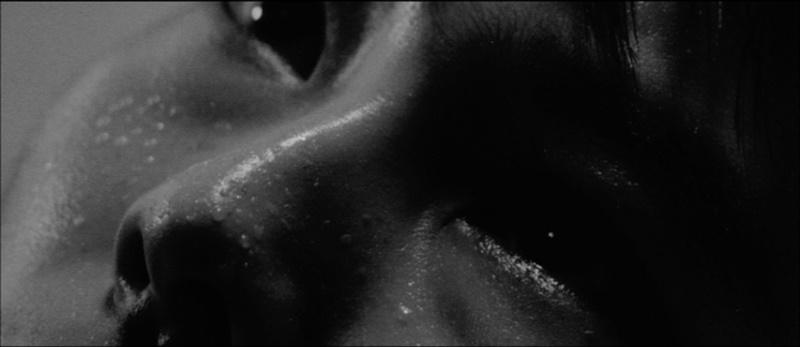 |
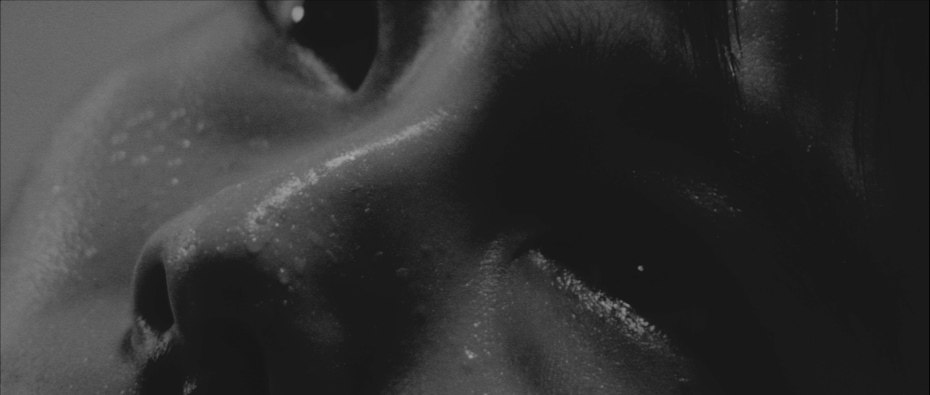 |
|
About the Reviewer: Hello, fellow Beavers! I have been interested in film since I viewed a Chaplin festival on PBS when I was around 9 years old. I credit DVD with expanding my horizons to fill an almost ravenous desire to seek out new film experiences. I currently own approximately 9500 DVDs and have reviewed over 3500 myself. I appreciate my discussion Listserv for furthering my film education and inspiring me to continue running DVDBeaver. Plus a healthy thanks to those who donate and use our Amazon links.
Although I never wanted to become one of those guys who
focused 'too much' on image and sound quality - I
find HD is swiftly pushing me in that direction. 60-Inch Class (59.58” Diagonal) 1080p Pioneer KURO Plasma Flat Panel HDTV PDP6020-FD
Oppo Digital BDP-83 Universal Region FREE Blu-ray/SACD
Player APC AV 1.5 kVA H Type Power Conditioner 120V Gary W. Tooze ALL OUR NEW FORMAT DVD REVIEWS
|
![]()
![]()

![]()
![]()
